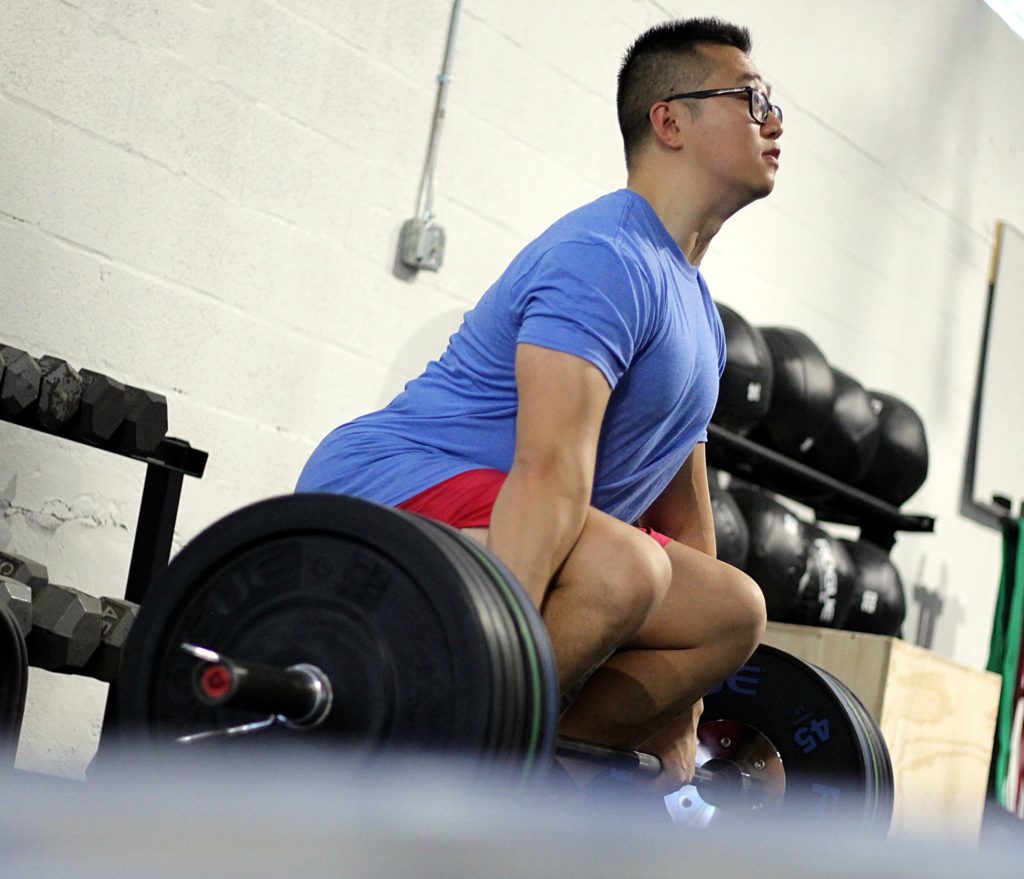We have all heard that the deadlift works on your lower back. In fact if you ask the person next to you what is the main mover in a deadlift they will respond with “your back!”
The truth of the matter is that the main area you should feel a deadlift shouldn’t be your lower back. It should be your hamstrings and glutes. So why do most people feel the emphasis in their back when they pick things up off the floor?
Anatomy:
When we pick things up our brain has to conduct our body into a position to pick up the object. When we do this we end up sending the hips back, the hands go down, and the back will either bend or remain straight depending on the person’s natural reaction to picking up a load.
When we go the route of bending our back, we begin to run into issues with lumbar pain from deadlifting. The reason being is that our spine is more like a brace than it is like our biceps. It isn’t meant to contract to create force, it is meant to assist the force of other muscles.
Think of the spine like a stack of blocks with a weight on top. When they are stacked directly over each other (in our spine this is a natural S curve) we can load a significant weight. The reason being is that the force of the weight is able to be sent down the stack and directly into the floor, making this configuration an excellent conduit.
Now lets move any block in this stack to the left or right about half the width of what ever you are imagining for the size of these blocks.
If we were to leave the weight at the top from when the blocks were perfectly stacked, we would run into an issue. The stack will start to tilt and it would inevitably fall. This is because the forces the weight is putting on the stack aren’t going to the floor, they are going to that out of place block.
In real life this is the same as our back bending away from its natural S-curve. When we don’t lift with a spine in neutral position, we put a block out of alignment in our stack and the force heads directly to that break. This can cause soreness, pain, and/or injury.
Correcting This:
We correct the issue of the break by bracing the spine from all sides.
First is the aforementioned lower back. These muscles should be tight as we lift, helping disperse and transfer the load to the floor. We should think about getting the muscle flat rather than pulling it tight. After all, we shouldn’t be twerking as we deadlift, that is a break in the stack.
Now the most important action, abdominal pressure.
While the back acts as the direct brace for the spine, it has a very crucial partner in support. This would be the abdominal muscles. These guys in partnership with the diaphragm help create an air bubble that puts pressure up against the spine and keeps you from folding forward during a lift.
When we hold ourselves up with the abdominal muscles, this takes pressure off the spine to keep us upright. To go with our analogy of the stack from earlier, this would be like surrounding the base of the stack with dirt. This would make it much more stable and keep the blocks it surrounds from going out of place.
In order to make sure that we are bracing with the correct muscles in day to day life we need to work on controlling our breath and our abs on command. You should be able to hold plank and talk essentially.
The way that I gained this awareness was to hold a plank, pushing out my stomach rather than tucking it in, and talking to friends as I held it (About 3-5 sets of :30). (If you are reading this during the pandemic, then read a book aloud for the duration of your plank). This helped create a mind body connection that made sure that I could create abdominal pressure without being required to hold me breath. This helped eliminate every day back pain for me that was created by a car accident I was involved in during high school.
I then translated this skill to lifting by doing tempo lifts (3-5 seconds down, then explode up) at weights that were well below maximum and worked my way up to a point where I wouldn’t fold in half at heavy weights. If at any point I would lose my upright torso, the lift would end. Not the sexiest way to lift, but the best way to reduce back pain for sure.
The Journey:
As hokey as it sounds, fitness is a journey. Things will happen to you and your body that will always throw things out of wack. Even with the best core in the world, back pain can come around due to a multitude of issues, the most common of which is tightness (which we will cover next time).
All we can do is prepare our bodies the best we can to support us in our every day actives. A strong core and sound fundamental lifting is the best way to do this. Having a solid understanding of why we have back pain can reduce panic when dealing with pain.
If doing work on your own like this seems stressful and out of reach, you can always find help! A great place to learn how to lift is with us but if you aren’t in the Houston area, a CrossFit or USAW barbell club can help you learn how to lift properly and get your bracing down.
Until then do your planks, practice your form, and keep those spines natural!

